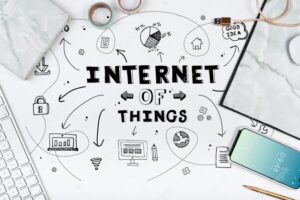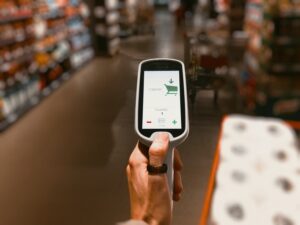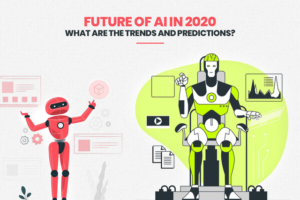Many of the doctors, private clinics, and other abodes of hospitality are well-versed with the fact that cloud technology can offer innovations.
Such types of innovations may impact the ways healthcare industries have constantly been operating for ages.
With the changing times, the experts of healthcare tend to analyze the loopholes in the existing norms of treatment and propose solutions necessary for their patients that can be purchased in a much cost-effective and streamlined manner.
Furthermore, there could be some mistakes while setting up hosting from the existing cloud service providers. But all those must be addressed well in the stipulated time.
This is because if the service providers fail to estimate the bandwidth required for operating the healthcare sectors or levelling up the security standards, this can create a nuisance – for sure.
Henceforth, such mistakes must be avoided so that the ten different ways of exploring the latest inventions for the healthcare industry via existing cloud computing resources and the updates related to any of the cloud types can shape the future of healthcare management at low-stakes.
The perspective of healthcare experts and other professionals towards cloud
A successful cloud system – if implemented well within the necessary storage and computational standards – can offer a robust and scalable platform for storing the records of patients in a much-encrypted manner.
Besides, the economic feasibility and flexibility offered by the existing cloud technology (or technologies) have been able to accelerate the healthcare industry with a commendable reduction in operational costs and therapeutic strategies.
“BCC researchers have announced that cloud technology and the necessary add-ons to run the computational resources will capture the healthcare market till $35 billion in 2022.”
Now you might be curious to know about those 10 ways of transforming healthcare. Without analyzing more trends for computing resources we may begin with the first one.
#1. SaaS business models for healthcare
The business models used by SaaS (Software As a Service) have offered a way of dealing with the highly-sensitive transitions depending on the key variables of the 2020 healthcare industry. From analyzing the healthcare market based on bookings made quarterly to converting them into successful conversions, the technology supports the necessary applications like PACS, EHR, etc.
Each of the applications stores information about the patients – like age, blood group, disease type, and so on.
Also, for accessing more data about the admitted persons the experts working for the hospitality can use non-clinical tools (using SaaS). The tools are RCM, supply chain, etc.
The benefit of using them is that obtaining copies for cross-examining the charges applicable to each patient can now be done via invoices not prone to unexpected costs incurred in purchasing a license.
#2. Securing the infrastructure via IaaS
One may use IaaS of the cloud technology for strengthening the infrastructure so that the healthcare providers who wish to ditch the outdated ways of securing the infrastructure of the hospitality sector can achieve the same – accessing the digital benefits of the cloud in a much-encrypted manner.
All this can be achieved by outsourcing the IT infrastructure of such healthcare so that the trained individuals can robustly access the patient’s details and send the required data to the authorities primarily responsible for all the activities occurring inside the healthcare sectors.
To achieve this, IaaS has been able to strengthen the infrastructure via tools like CapEx (for estimating capital expenses), CFEngine (for scaling billions of compliance checks), SaltStack, Ansible, etc.
#3. Acquiring additional control over the staff
PaaS has successfully been able to simplify serverless computing. This is because the operating systems and development tools required to manage clients via middleware can now comply with the mandatory requirements of security and compliance.
Such control can reduce the costs hospitality sectors need to bear for managing staff because vendors take care of the necessary amendments required to keep the workforce in a running state.
It includes meeting the SLAs, supporting the hospitals technically round the clock, and rebuilding the pricing models that may require databases matching the security encryption standards.
“88% of the organizations dealing with healthcare have successfully been able to reduce 20 per cent (%) of their expenses as they used ERP software for accessing the patients’ records.”
All the tools using the PaaS mechanisms can be named as Microsoft Azure, Salesforce, AWS Lambda, and so on.
#4. A sudden hike in the use of cloud-based services
Since data breaching is prevailing nowadays, many of the companies offering services to healthcare organizations have started using the necessary plugins. They can either be for SaaS, Paas, or any other service somewhere accessing cloud technology.
Moreover, all these services are solely capable of mastering the methodologies used by the hospitality sectors in estimating the records and delivering the necessary updates regarding medicines, treatment analysis, etc.
For instance, if the patient is eager to know the status of his/her medical conditions, the person may use the i-Patient Portal. In case the reimbursements are still pending from the department’s end, U2Doc is there to assist you with the necessary intimidations that invite a sense of trust and reliability.
#5. Upcoming generations believe home care for medical purposes
Homecare includes a set of comforts one can enjoy at any stage. From achieving a high-quality life to accessing rehabilitation facilities (either in the short or long-term), it is much feasible to adopt them for recovering well.
“17 Million hospital admissions have shown interest in Home Care without compromising the quality of care as there was a 75 per cent hike of satisfaction in hospitalization in 2019”
Moreover, in the age of COVID 19, respondents whole-heartedly believe the fact that unplanned hospitalizations can be lowered down to 63% if the significance of caregiving attitude can be understood well by (both patients and doctors) contributing a token of impact in the emergency response systems.
#6. Collaborating for case studies involving extensive researches
Big Data that somewhere uses cloud technology to analyze the current situation of patients can predict the unexpected fluctuations well.
Such fluctuations are solely capable of worsening the existing condition of the person admitted. With the ways of collaborating in crucial times, doctors can understand the previous case studies and conclude whether to diagnose the current case further or not.
All this is possible with the existing cloud infrastructure that somehow implants flexibility in communication so that stakeholders may adapt as per the changing demands and requirements of the patient and respond quickly and efficiently.
#7. Many datasets with virtual drives
Patients come from diversified demographics. This automatically includes a statistical examination based on blood groups, hormonal classification, and response to the existing environmental conditions.
With the benefits of cloud technology, senior doctors may access the information stored at the virtual drives. These drives can collectively analyze the datasets – depending upon the demographics.
Henceforth, organizations offering healthcare services can effectively manage the records and resources better so that the information can be delivered well in different green-computing environments.
#8. Optimizing healthcare budgets
Healthcare organizations – that followed traditional ways of accessing records – have now been able to strengthen the pillars of treating their patients.
Just to maintain the systems (IT) accessing records of the current or previous year patients can now operate in a much scalable and precise manner.
This is because the outsourced IT departments need to pay nominal subscription charges for retrieving the data probabilistically and analyzing the emergency for the admitted persons.
Furthermore, they may use the records so that the medical products can be availed at cheaper prices.
#9. Renaming the medical industries with IoT
The IoT healthcare market is well-versed with the trends and restraints offered by the current generation. Hence, the market has decided to rename the 2020 healthcare industry with the Internet of Things (IoT).
Moreover, they understand the significance of categorizing the patients as per the type of disease and timestamps they keep on visiting the hospitals. With applications like Cycore, CGM, Indigestible sensors, etc it has now become possible to sense a worn and recommending the correct injection of insulin to patients.
Also, relevant insights like daily checkups, blood levels, and response towards the changing treatments can be estimated and analyzed so that patients need not hassle the hospitals unnecessarily for the reports.
#10. Blockchain management for better consultation
With the increase in deployment of software using the fundamentals of blockchain, hospitals need not worry about the cyber-attacks happening in an unbiased manner.
The reason for using the blockchain protocols that can assertively improvise cloud technology is that it is possible to integrate the infrastructure well with medical claims, drug supplies, and ways of processing invoices containing a detailed examination of medicines as per the disease.
Also, the IT systems accessing the fundamentals for different types of blockchains are much confident in offering ownership to patients for exchanging data with other departments of healthcare with the streamlined methodologies used by the encryption standards of the available cloud versions.
Should I rely on conventional ways of healthcare industries?
For accessing your medical reports by taking out precious time from the daily hustle, you need not go to the healthcare organizations offering the services.
Instead, it is feasible to retrieve the information online via portals confidently using cloud technology. The benefit is that it will change your perception towards IoT and Big Data that work collectively towards helping patients keep a track of their health status.
Such status includes a detailed examination of blood pressure, heartbeat, cholesterol level, etc. All this will improve their lifestyle so that the ways adopted by the healthcare industries in treating their patients and maintaining their estimates gives a competitive edge to keeping you free from diseases and travelling long-routed destinations without any worry.










